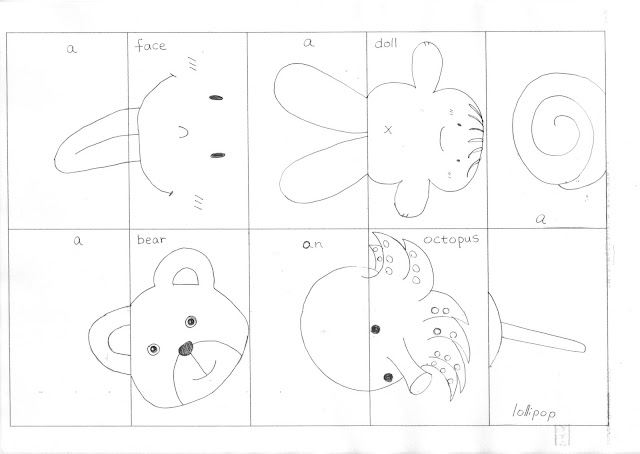Use the card set below to review and practice the target phrase, "Do you know what this is?" and it's appropriate response, "I think it is a/an _____." When two cards are matched correctly they reveal a picture. There are 40 cards in a set that when paired make 20 pictures.

First introduce and practice the phrase: "Do you know what this is?" and the response, "I think it is a/an _____." Then review the vocabulary written on the cards (at the bottom of the page). Use A4 (about letter size) size cards or larger to introduce the vocabulary. There are twenty matching cards in the set depicting twenty different objects. After you've gone over the new words hang one card on the board (half a picture) along with a few possible matches and ask the class: "Do you know what this is?"
Give the first student to answer correctly one of the two cards and repeat the exercise as many times as you think necessary.
When you're finished, ask six students (maybe those who collected the most cards) to come up to the front of the class so they can help you model the next part of the exercise using a smaller sized deck of the same cards (without any text printed on them). Give each student a card. Then have them hold the card out and in turn ask each person in the group of six, "Do you know what this is?" Once a student has found the person with the matching card who uses with the appropriate response, they can both return to their seats. Next ask another group of six up to model the exercise once again. This time instead of asking the question in turns, the students ask in random order all at once. Like before, once they find their matching card they may return to their seats.
Next distribute one card to every student in the class. Ask everyone to stand up and repeat the exercise they have just watched, only this time involving everyone in the class. Once two students have found a match to their card they can return to their seats.
All the students should have been able to ask the target question at least a few times. When everyone is finished and seated, look at each student's card and ask them individually: "Do you know what this is?" so all the students have a chance to use the appropriate response phrase.
That's basically what this is but it could be something entirely different.
Here is the card set:






















